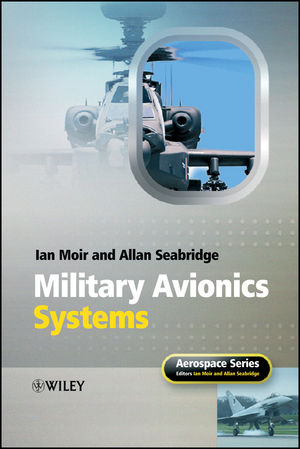Military Avionics SystemsISBN: 978-0-470-01632-9
Hardcover
544 pages
April 2006
 This is a Print-on-Demand title. It will be printed specifically to fill your order. Please allow an additional 10-15 days delivery time. The book is not returnable.
|
||||||
Acknowledgements.
About the Authors.
Introduction.
1 Military roles.
1.1 Introduction.
1.2 Air superiority.
1.3 Ground attack.
1.4 Strategic bomber.
1.5 Maritime patrol.
1.6 Battlefield surveillance.
1.7 Airborne early warning.
1.8 Electronic warfare.
1.9 Photographic reconnaissance.
1.10 Air-to-air refuelling.
1.11 Troop/materiel transport.
1.12 Unmanned air vehicles.
1.13 Training.
1.14 Special roles.
1.15 Summary.
Further Reading.
2 Technology and architectures.
2.1 Evolution of avionics architectures.
2.2 Aerospace-specific data buses.
2.3 JIAWG architecture.
2.4 COTS data buses.
2.5 Real-time operating systems.
2.6 RF integration.
2.7 Pave Pace/F-35 shared aperture architecture.
References.
3 Basic radar systems.
3.1 Basic principles of radar.
3.2 Radar antenna characteristics.
3.3 Major radar modes.
3.4 Antenna directional properties.
3.5 Pulsed radar architecture.
3.6 Doppler radar.
3.7 Other uses of radar.
3.8 Target tracking.
References.
4 Advanced radar systems.
4.1 Pulse compression.
4.2 Pulsed Doppler operation.
4.3 Pulsed Doppler radar implementation.
4.4 Advanced antennas.
4.5 Synthetic aperture radar.
4.6 Low observability.
References.
5 Electrooptics.
5.1 Introduction.
5.2 Television.
5.3 Night-vision goggles.
5.4 IR imaging.
5.5 IR tracking.
5.6 Lasers.
5.7 Integrated systems.
References.
6 Electronic warfare.
6.1 Introduction.
6.2 Signals intelligence (SIGINT).
6.3 Electronic support measures.
6.4 Electronic countermeasures and counter-countermeasures.
6.5 Defensive aids.
References.
7 Communications and identification.
7.1 Definition of CNI.
7.2 RF propagation.
7.3 Transponders.
7.4 Data links.
7.5 Network-centric operations.
References.
8 Navigation.
8.1 Navigation principles.
8.2 Radio navigation.
8.3 Inertial navigation fundamentals.
8.4 Satellite navigation.
8.5 Integrated navigation.
8.6 Flight management system.
8.7 Navigation aids.
8.8 Inertial navigation.
8.9 Global navigation satellite systems.
8.10 Global air transport management (GATM).
References.
9 Weapons carriage and guidance.
9.1 Introduction.
9.2 F-16 Fighting Falcon.
9.3 AH-64 C/D Longbow Apache.
9.4 Eurofighter Typhoon.
9.5 F/A-22 Raptor.
9.6 Nimrod MRA4.
9.7 F-35 joint strike fighter.
9.8 MIL-STD-1760 standard stores interface.
9.9 Air-to-air missiles.
9.10 Air-to-ground ordnance.
Resources.
References.
10 Vehicle Management Systems.
10.1 Introduction.
10.2 Historical development of control of utility systems.
10.3 Summary of utility systems.
10.4 Control of utility systems.
10.5 Subsystem descriptions.
10.6 Design considerations.
References.
Further reading.
11 Displays.
11.1 Introduction.
11.2 Crew station.
11.3 Head-up display.
11.4 Helmet-mounted displays.
11.5 Head-down displays.
11.6 Emerging display technologies.
11.7 Visibility requirements.
References.
Bibliography.
Glossary.
Index.



